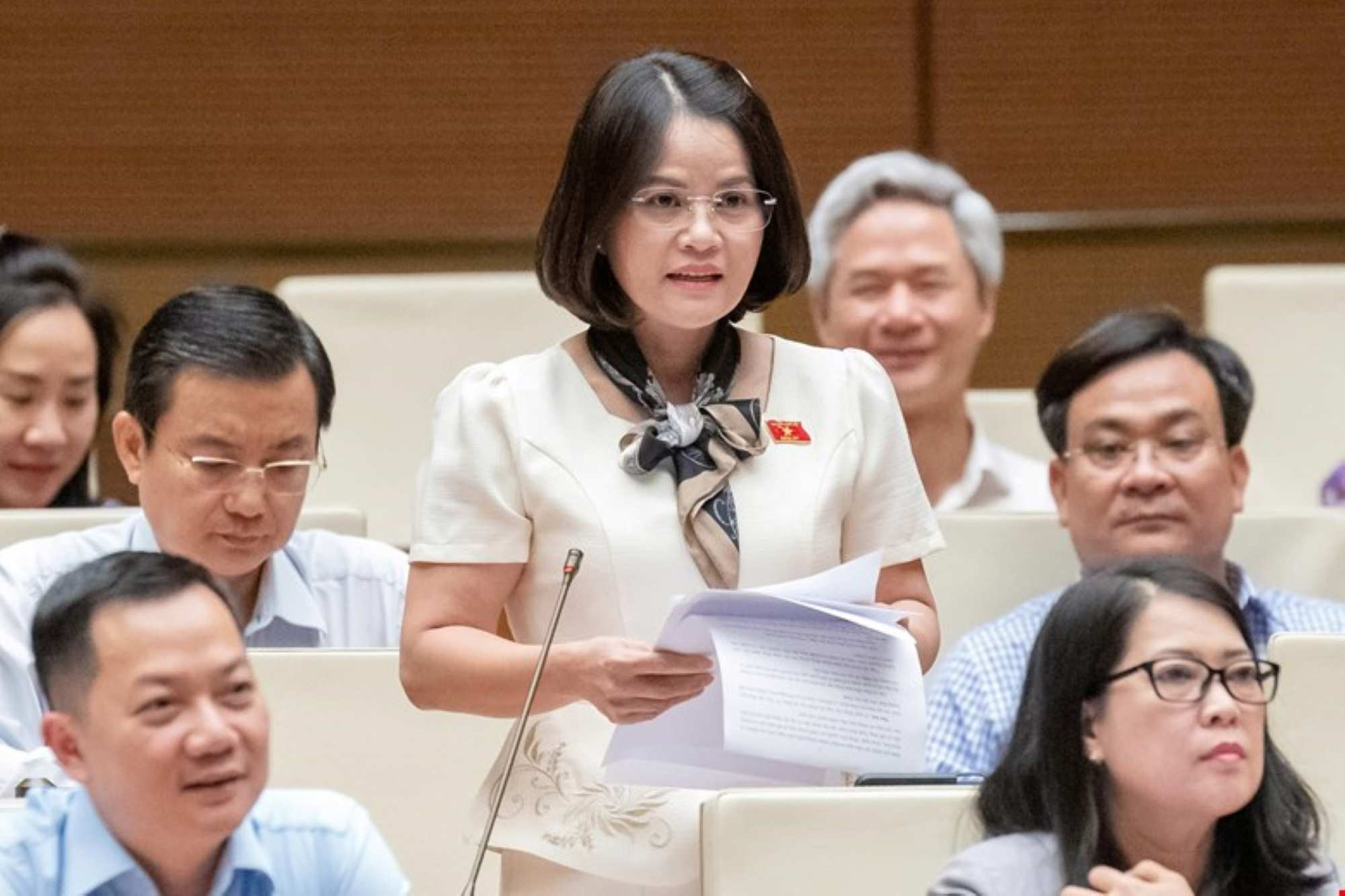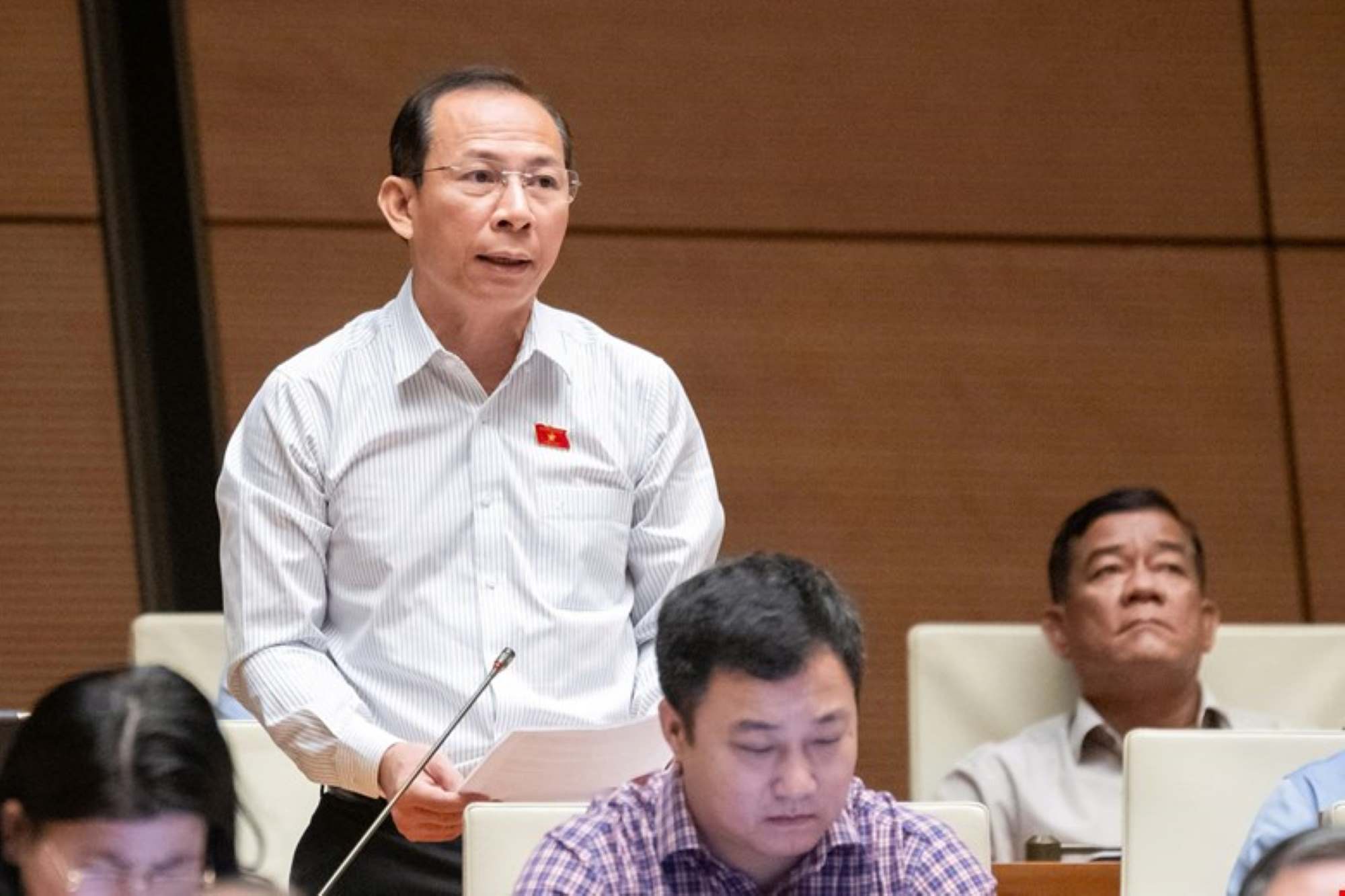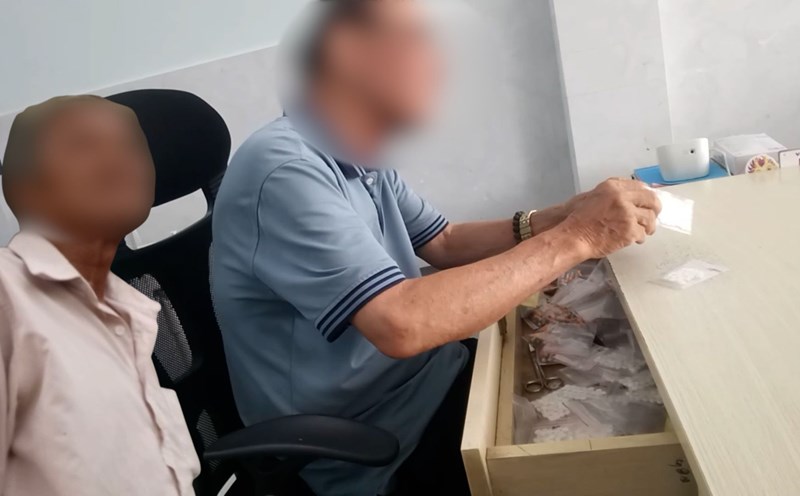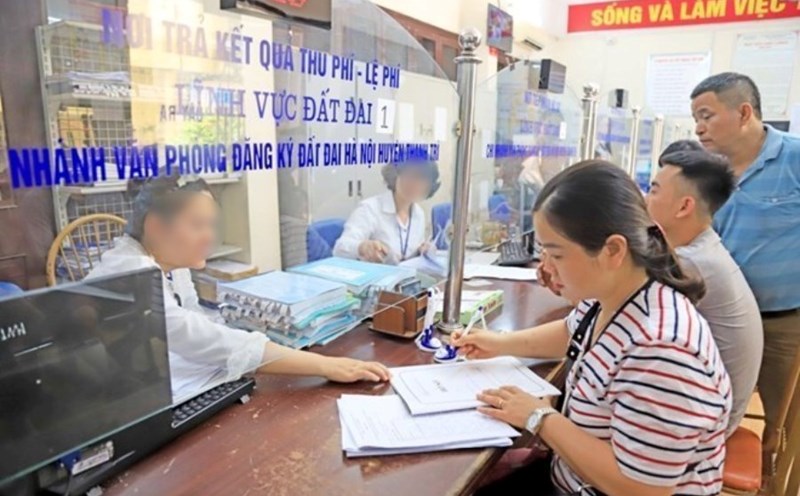The policy has profound humanitarian significance
In recent years, every time he comes close to the school, Mr. Ngan Van Lon - Chairman of the People's Committee of Trung Ly Commune (Thanh Hoa) - and his teachers have traveled to the village to encourage students to study.
Trung Ly is a border commune bordering Laos, a particularly difficult one in Thanh Hoa province, the whole commune currently has nearly 1,400 households, of which nearly 66% are poor households and near-poor households. The population density in the area is still uneven, especially in remote areas. Some households still believe that when their children grow up, they have to stay home to help their parents, or only have 5th grade and junior high school. When they are old enough, they get married or work far away at companies or work in fields and raise livestock around the commune... This has greatly affected the students' studies.
In addition, there are currently 15 villages in the commune, and the roads are still facing many difficulties. There are even villages dozens of kilometers away from the commune center. A typical example is Ta Com village, about 50km from the commune center with an extremely difficult road.
Originating from economic and traffic conditions, life is still difficult, so in recent years, in Trung Ly commune, there have been cases of students dropping out of school halfway. The story in Trung Ly is a typical example of the hardship of hundreds of thousands of students in the border area - where geographical, climatic and economic conditions make going to class a challenging journey.
According to the report of the Ministry of Education and Training, there are currently 248 land border communes, with more than 625,000 students. Of which, more than 332,000 students have the need to study at boarding or inpatient, but only about 59,000 students have been met - equivalent to only 1/5 of actual needs.
That means there are still more than 273,000 students in the border area - most of whom are children of the H'Mong, Dao, Tay, Thai, Khmer ethnic groups... - who are still crossing streams and border forests to go to school every day; still have to eat white rice with sesame salt, stay in temporary houses or camps. Many students drop out of school halfway, many are caught up in early work, early marriage - and the vicious cycle of poverty and lack of education has lasted for many generations.
Contributing to preserving national territorial sovereignty from the roots
On April 18, 2025, General Secretary To Lam worked with representatives of the Government Party Committee and central departments, ministries and branches on the implementation of the Central's resolutions on education and training, preparing for a new Resolution of the Politburo on breakthroughs in the development of education and training; on organizing 2 sessions/day but reducing academic pressure, no fees; lunch for primary and secondary school students in mountainous areas.
On July 18, 2025, Politburo member and Standing member of the Secretariat Tran Cam Tu signed and issued Notice No. 81-TB/TW on the Politburo's conclusion on the investment policy to build schools for border communes. Notice 81 emphasizes: unify the investment policy for the construction of boarding schools for primary and secondary schools in 248 border communes on land. In the immediate future, the pilot investment is to complete the construction or renovation of 100 schools in 2025 (no later than the opening date of the following school year).
The implementation of the construction of boarding schools in border communes is not simply an educational policy, but a "comprehensive offensive" on regional inequality - a spearhead for the long-term stability of the country.
On July 27, implementing the conclusion of the General Secretary of the Politburo and the notices Notice 177-TB/VPTW, Notice 81-TB/TW, dated July 27, 2025, Prime Minister Pham Minh Chinh chaired an emergency meeting with 6 Ministries and 22 provinces on building boarding schools in land border communes. At the meeting, the Prime Minister emphasized: "implement the construction of 100 schools for border communes from now until August 30, 2026, meaning the deadline is only 13 months, so we must be more rapid and bold, so the way we behave must be rapid and bold, not slow down".
According to the Government's requirements, each school must ensure an area of 5-10 hectares, with full classrooms, boarding houses, dining rooms, playgrounds, IT rooms, toilets, electricity - water - telecommunications systems and protective fences.
The Ministry of Construction is assigned to design a school model "in an open, diverse direction, suitable to local conditions, ethnic culture, regional climate and especially must be able to respond to natural disasters and climate change".
The Prime Minister stated that the State resources are the main source, the Ministry of Finance balances, arranges and mobilizes capital; at the same time, mobilizes people to donate land to build schools, mobilizes the cooperation and help of society, businesses, and philanthropists, with the spirit of "whoever has something to help others, whoever has meritorious services to help others, whoever has property to help others, whoever has a lot to help a lot, whoever has little to help a little".
Also on July 27, 2025, in Dien Bien, a project was built. Si Pa Phin Primary and Secondary School is the first project to be implemented according to the new policy of the Politburo.
Attending and speaking at the groundbreaking ceremony, General Secretary To Lam emphasized: Our Party always identifies national education as the top priority, a key driving force for the sustainable development of the country.
Building schools is not only to help children have better learning conditions, but also to aim for the long-term goal of improving the quality of life of people in border areas, contributing to preserving national sovereignty from the root, which is people, a community of residents attached to land, forests, and border markers - General Secretary To Lam said.
Looking more broadly, this campaign is part of Vietnam's overall "border scolarization strategy". When the border is no longer a "low knowledge area" but becomes an area with high population density, good local cadres, and well-trained youth - that is the time when "the border is no longer a boundary, but a development corridor".
Vietnam has had classic policies to maintain the border in the hearts of the people: Land policy, national defense policy, new rural infrastructure development... Now, with education, with schools, we are building a "soft milestone" - generations of ethnic students with knowledge, patriotism and community responsibility.
* National Assembly delegate Nguyen Hoang Bao Tran (HCMC National Assembly Delegation): The construction of 100 schools on the border does not only have the meaning of being a place to teach literacy. This is also a spiritual support, the beginning of knowledge, of hope, of change. A solid classroom today can be a launching pad for dreams of flying far tomorrow. When there is a spacious, safe learning environment and adequate learning conditions, each school is a fulcrum of hope for the future of thousands of children in remote areas.
Not only that, schools where ethnic minorities live are also places to preserve the language, writing and local cultural identity. This is a way for us to preserve cultural diversity, the richness of national identity, and not let alone in the development process.

* National Assembly Delegate, Member of the Presidium of the General Confederation of Labor, Chairman of the Thanh Hoa Provincial Federation of Labor Vo Manh Son (National Assembly Delegation of Thanh Hoa Province): "Currently, there are still many border communes lacking schools or students having to study far away, study together, and have very difficult learning conditions. Building schools right in the locality will help children go to school at the right age and at the right level, minimizing early dropouts.
The investment policy to build schools for border communes is a very timely policy, close to current reality.
Having good schools will help retain local people, limit spontaneous migration, and stabilize the population at the border - this will be very important in the strategy for national defense and security in border areas. In addition, children are able to study to the point where they will have better job opportunities in the future, escape poverty sustainably, and help their families and communities develop together.
Cao Nguyen records

Localities quickly take action
* Son La is one of the border provinces that have invested in educational resources, especially among the 100 schools invested in 2025.
Currently, there are 44 schools in 13 border communes of Son La province, with over 14,300 students. According to reports from communes, localities and schools, all need to invest, upgrade facilities, serve the study and living of students, most of whom are children of ethnic minorities in border areas.
Mr. Nguyen Dinh Viet - Chairman of Son La Provincial People's Committee - has directed communes to continue reviewing and proposing plans for locations and locations for school construction in the area to ensure requirements and a scale of 3-5 hectares... The Chairman of Son La Provincial People's Committee also emphasized that investing in building schools for border communes is an important policy in socio-economic development and implementing ethnic policies, aiming to improve people's knowledge, human resource quality, create a source of cadres who are ethnic and local people; improve the material and spiritual life of people in border areas, contributing to strengthening national defense and security in border areas.
Nguyen Truong
* Da Nang City plans to spend about 740 billion VND to invest in building a solid and modern system of ethnic boarding and semi-boarding schools in 6 land border communes.
This is a proposal that the Department of Education and Training (DET) of Da Nang City has just made at the meeting of the Steering Committee for the implementation of Notice No. 81 of the Politburo on the afternoon of July 30.
The project will completely rebuild 4 schools in Hung Son, Tay Giang, La De, Dac Pring communes and rebuild 2 schools on old land in La Ee and A Vuong communes. Each school has an area of 6,700m2 to 15,000m2, meeting the boarding needs of 300 - 600 students. Phase 1 is expected to be implemented in the 2025-2026 school year in 3 communes of La E, Dac Pring and Hung Son with a budget of more than 400 billion VND.
Mr. Nguyen Van Quang - Secretary of the Da Nang City Party Committee - emphasized that this is a major policy, contributing to raising people's knowledge and ensuring social security in border areas.
Ban Tea
* Gia Lai has 7 border communes bordering Cambodia, including: Ia Tach, Ia Mo, Ia O, Ia Chia, Ia Pon, Ia Nan, Ia Dom.
In these 7 communes, there are a total of 21 schools at all levels of education, but most of them do not have boarding or semi-boarding functions.
Currently, there are more than 10,300 students studying in border communes, of which 7,134 students have the need to study as boarding students or semi-boarding students.
Chairman of Gia Lai Provincial People's Committee Pham Anh Tuan said that the Central Government plans to allocate 150 billion VND to each border commune to build schools, public housing, and agency headquarters. This is an urgent task that needs to be implemented soon so that students can enjoy new learning conditions from the 2026-2027 school year.
Mr. Tuan requested border communes to urgently organize surveys and assess the current status of school facilities in the area to develop investment and expansion plans suitable to actual needs. The implementation viewpoint is that schools must meet standards, have boarding areas for students to study 2 sessions/day, and be able to stay and have free lunch at school.
Thanh Tuan











